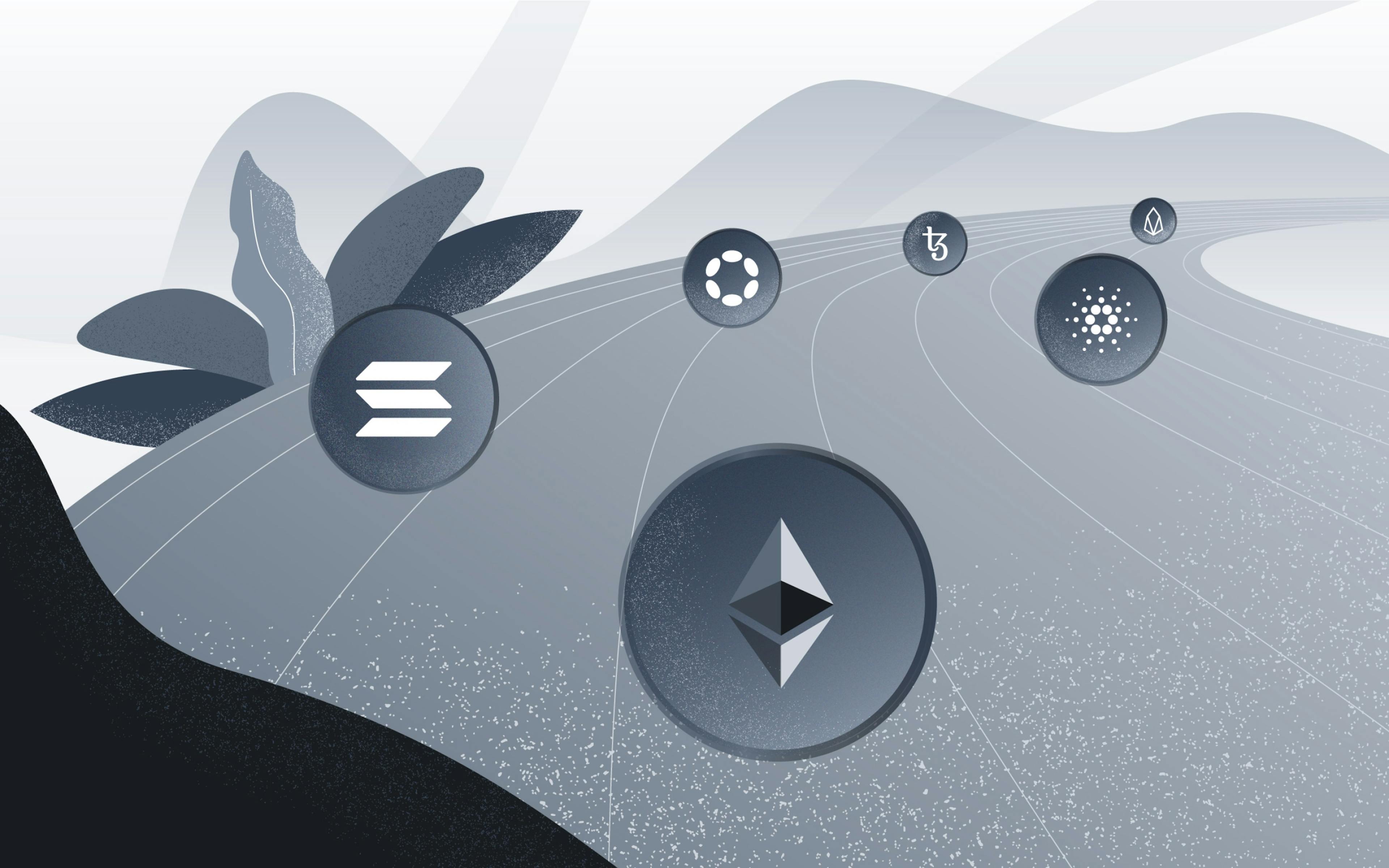
What’s an ‘Ethereum killer?’
The term "Ethereum killer" refers to a blockchain directly competing with Ethereum. These competing chains will have many of Ethereum's features but they tend to use different technologies, claiming to improve Ethereum's shortcomings. Often, an Ethereum killer will have faster transaction speeds and lower gas fees, an area Ethereum has struggled with as demand soared in late 2021.
All these competing blockchains use smart contract technology. Smart contracts are coded programs that perform preset functions when certain conditions are met. Since smart contracts run on code, they make trustless transactions possible in DeFi (decentralized finance).
Like its main competitors, "Ethereum killers" focus on encouraging Web3 developers to create dApps on their blockchains. In addition to DeFi dApps like decentralized exchanges (DEXs), Ethereum competitors have many other Web3 projects like NFT markets and play-to-earn games.
Examples of Ethereum competitors
Ethereum inspired many developers to create competing smart contract blockchains. However, only a few ETH killers have become crypto market leaders. Some of the largest "Ethereum Killers" by market cap are Solana, Cardano, Polkadot, Avalanche and Algorand. All of these projects have lower gas fees and process more transactions per second than Ethereum. However, Ethereum may be a stronger technology when it comes to security or decentralization. Additionally, technologies that are composable with Ethereum have released recently, improving it as a whole.
Ethereum vs. competitors: Will Ethereum survive?
Despite the rise in Ethereum killers, most crypto analysts don't believe Ethereum will "die" anytime soon. As the world's first smart contract blockchain, Ethereum has a significant lead over its competitors. Most cryptos in Web3 are still concentrated on Ethereum protocols, and there's a large community of developers and validators on the Ethereum blockchain.
At the time of writing, Ethereum has a total of $31.5 billion locked in its DeFi protocols, representing more than 50% of the total value locked (TVL) in all DeFi applications.
Although Ethereum has a strong community, it has significant scalability issues. Most Ethereum replacements attract users and developers with the promise of cheaper fees and quicker transaction speeds. Even with Ethereum's recent upgrade to PoS, the main Ethereum blockchain is slower and more expensive than alternatives.
Also, as more chains like Polkadot introduce blockchain interoperability, it's unclear whether Ethereum will maintain its competitive advantage. Some crypto enthusiasts see interoperability as the future of Web3, which may mean Ethereum competitors gain a larger share of the TVL.
Whether Ethereum remains the dominant smart contract blockchain will largely depend on the success of Ethereum's recent upgrades.
Ethereum layer-2 scaling solutions
In addition to Ethereum's post-Merge upgrades, there are many layer-2 blockchains that are already making it cheaper and faster to interact with Ethereum. Unlike ETH killers, these layer-2 blockchains are built on top of Ethereum and are focused on making the main blockchain more convenient. These include products such as Polygon, Arbitrum and Optimism.
The growth in layer-2 scaling solutions may keep Ethereum competitive even as ETH killers steal some of the crypto market share.
Wrapping up
There's no denying the rise in Ethereum competitors, but Ethereum still dominates as the leading smart contract platform. ETH killers may have faster transaction speeds and lower fees, but each has unique strengths and weaknesses. Also, as Ethereum moves forward with its post-Merge upgrades, it might erase some of its competitors' value propositions.
While Ethereum may lose market share as more competitors enter the market, it still has a significant lead in the smart contract space. Plus, thanks to the growth in layer-2 scaling solutions, it's becoming easier for users to interact with Ethereum without paying exorbitant fees.
At Worldcoin, we envision a future where all blockchains can co-exist. Increased collaboration and communication among blockchains will help spur innovation in the crypto sector. To make the first step easier, we’re putting a share of our crypto in the hands of every individual on the planet for free. Subscribe to our YouTube channel to learn more about the crypto ecosystem.